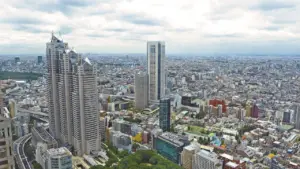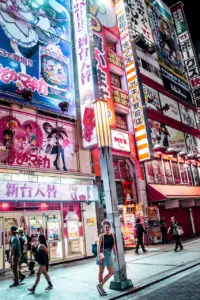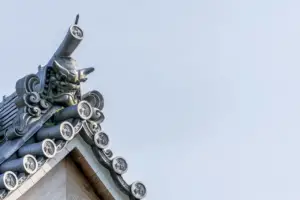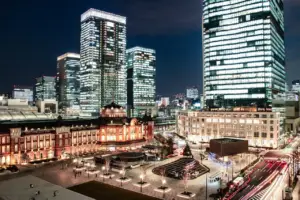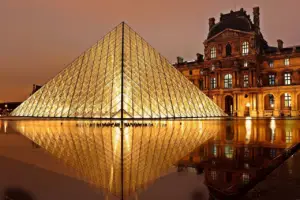If you’re planning a trip to Japan, you’re in for a treat – the country is full of rich cultural history and breathtaking sights.
With so many options to choose from, it can be hard to know where to start. That’s why we’ve compiled a list of the 10 must-visit cultural sites in Japan.
From ancient temples to modern art museums, these destinations are sure to leave a lasting impression on you.
Whether you’re interested in traditional Japanese culture or modern art, there’s something for everyone on this list.
You’ll have the opportunity to explore some of Japan’s most iconic landmarks, like the Golden Pavilion and the Hiroshima Peace Memorial Park.
And you’ll also discover some hidden gems, like Naoshima Island, which is home to a stunning collection of contemporary art museums.
So get ready to immerse yourself in the beauty and history of Japan – these cultural sites are not to be missed.
Key Takeaways
- Japan offers a diverse range of cultural sites, from ancient temples to modern art museums.
- Tokyo National Museum is a must-visit for those interested in Japan’s rich cultural history.
- Hiroshima Peace Memorial Park serves as a powerful reminder of the importance of peace.
- Naoshima Island is a hidden gem for art enthusiasts and nature lovers.
Tokyo National Museum
You’ll love exploring the Tokyo National Museum – it’s the perfect place to immerse yourself in Japan’s rich cultural history! Located in Ueno Park, the museum houses an extensive collection of art and artifacts from Japan and other Asian countries.
With over 110,000 items in its collection, the museum is one of the largest in Japan and offers a fascinating glimpse into the country’s past. The Tokyo National Museum is divided into five separate buildings, each dedicated to a different aspect of Japanese history and culture.
The Honkan building is the main hall and features a vast collection of Japanese art, including ceramics, paintings, and sculptures. The Toyokan building houses artifacts from China and Korea, while the Hyokeikan building showcases items from the Meiji period.
With so much to see and learn, the Tokyo National Museum is a must-visit destination for anyone interested in Japanese culture and history.
Hiroshima Peace Memorial Park
If you’re in Hiroshima, don’t miss the chance to visit the moving Peace Memorial Park. This park was built to commemorate the victims of the atomic bomb that was dropped on the city during World War II. The park is a powerful reminder of the horrors of war and the importance of peace. The park covers an area of over 120,000 square meters and is home to several monuments and museums.
One of the most striking features of the park is the Atomic Bomb Dome. This building was one of the few structures that remained standing after the bomb was dropped and has been preserved as a symbol of the devastation caused by the bomb. Another must-see attraction in the park is the Peace Memorial Museum. This museum contains exhibits that tell the story of the bombing and its aftermath, including personal accounts from survivors. The museum also has a collection of artifacts, including clothing and other items that belonged to the victims. A visit to the Hiroshima Peace Memorial Park is a somber but important experience that will leave a lasting impression on you.
| Column 1 | Column 2 |
|---|---|
| 1. Atomic Bomb Dome | 4. Children’s Peace Monument |
| 2. Peace Memorial Museum | 5. Cenotaph for A-bomb Victims |
| 3. Memorial Tower to the Mobilized Students |
The table above lists some of the key monuments and attractions in the park. Each of these monuments has its own unique story and significance, but they all serve as powerful reminders of the need for peace and the devastating cost of war. A visit to the park is a humbling experience that will inspire reflection and contemplation. Whether you’re a history buff or simply interested in learning more about the world, the Hiroshima Peace Memorial Park is a must-visit cultural site in Japan.
Kiyomizu-dera Temple, Kyoto
Located in Kyoto, the Kiyomizu-dera Temple is a breathtaking example of traditional Japanese architecture. You’ll be amazed at the intricate details and the beautiful wooden structure of the temple.
As you make your way up the steep hill to the temple, you’ll be greeted by stunning views of Kyoto city. The main hall of the temple is perched on a steep cliff, supported by hundreds of pillars.
You can take in the panoramic views of the city and the surrounding mountains from the temple’s veranda, which juts out from the cliff. The temple is also home to several smaller shrines, a beautiful pagoda, and a tranquil garden.
You’ll be transported back in time as you walk around the temple’s grounds, taking in the serene atmosphere and the stunning architecture. Visiting Kiyomizu-dera Temple is a must-do activity for anyone visiting Kyoto.
Golden Pavilion (Kinkaku-ji), Kyoto
When you’re in Kyoto, don’t miss the chance to see the stunning Golden Pavilion, or Kinkaku-ji. Its shimmering gold exterior reflects beautifully in the surrounding pond. This UNESCO World Heritage Site was originally built as a retirement villa for a shogun in the 14th century. Later, it was converted into a Zen temple. The top two floors of the temple are covered in gold leaf, making it one of the most iconic and recognizable landmarks in Japan.
Walking around the temple grounds, you’ll find other beautiful features such as a traditional Japanese garden and a tea house. Here, you can experience a traditional tea ceremony. The temple also has a rich history, having survived numerous fires and restorations. Visiting Kinkaku-ji is truly an unforgettable experience and a must-visit cultural site in Japan.
Todai-ji Temple, Nara
You’ll be amazed by the grandeur of Todai-ji Temple, one of the largest wooden buildings in the world, housing Japan’s largest bronze Buddha statue.
As you approach the temple, you’ll see the massive Nandaimon Gate that welcomes visitors.
Once inside, you’ll be greeted by the stunning Daibutsuden (Great Buddha Hall) that houses the 15-meter tall bronze Buddha statue.
To fully enjoy your visit to Todai-ji Temple, here are some tips:
-
Don’t miss the opportunity to touch the pillar with a hole in it. It’s said that if you can pass through the hole, you’ll attain enlightenment.
-
Take a moment to appreciate the intricate details of the temple’s architecture, such as the wooden carvings and the ornate roof tiles.
-
Visit the Nigatsu-do Hall, a smaller but equally beautiful temple located behind the Daibutsuden. Its balcony offers a breathtaking view of the temple grounds.
-
If you’re lucky, you may even get to see the annual Omizutori ceremony, a ritual in which giant torches are lit to cleanse sins and pray for good health.
Himeji Castle, Himeji
Prepare to be transported back in time as you step into Himeji Castle, an architectural masterpiece that has stood the test of time. Located in the city of Himeji, Hyogo Prefecture, this castle is regarded as one of the finest examples of Japanese castle architecture. Built in the 17th century, it has survived natural disasters, wars, and restorations, and has been declared a UNESCO World Heritage Site.
Himeji Castle is a stunning sight to behold, with its tall walls, moats, and intricate architectural details. It is also known as the "White Heron Castle"due to its white exterior and resemblance to a bird taking flight when viewed from afar. Inside, you will find a maze of corridors, rooms, and staircases that will take you on a journey through history. Don’t forget to climb to the top of the castle’s main keep, which offers breathtaking views of the surrounding city and countryside.
| Column 1 | Column 2 | Column 3 |
|---|---|---|
| Type of Site | Location | Year Built |
| Castle | Himeji, Hyogo Prefecture | 1609 |
| Features | Status | UNESCO World Heritage Site |
| Tall Walls, Moats, Intricate Architecture | Restored and Open to the Public | Yes |
| Fun Fact | Visiting Information | |
| Also Known as "White Heron Castle" | Open Daily, Admission Fee Required |
A visit to Himeji Castle is not only a chance to appreciate the beauty of Japanese architecture, but also an opportunity to learn about the history and culture of Japan. Whether you are a history buff or simply looking for a unique cultural experience, this castle is definitely a must-visit site in Japan. So, prepare to be amazed as you step into this timeless masterpiece and immerse yourself in the rich history and heritage of Japan.
Naoshima Island, Kagawa Prefecture
Now that you’ve explored the magnificent Himeji Castle, let’s take a short ferry ride to Naoshima Island in Kagawa Prefecture, where contemporary art and nature blend in perfect harmony.
This small island has become a hub for art lovers from all over the world, with its stunning architecture, museums, and outdoor installations that showcase the beauty of art and nature.
One of the most notable attractions on Naoshima Island is the Chichu Art Museum, which was designed by the renowned architect Tadao Ando. The museum is built mostly underground and uses natural light to illuminate the artwork, creating a unique and immersive experience for visitors.
The museum houses a collection of works by Claude Monet, Walter De Maria, and James Turrell, among others. You’ll be amazed by the seamless integration of art and architecture, as the museum blends perfectly with the surrounding landscape.
Naoshima Island is truly a must-visit destination for art enthusiasts and nature lovers alike.
Gion District, Kyoto
If you’re looking to experience traditional Japanese culture, the Gion District in Kyoto is a must-visit destination. Here, you can witness geishas in their traditional kimonos, adding to the district’s charm and cultural significance.
The beautifully preserved architecture of the area will leave you in awe and create an immersive experience that will transport you back in time.
Experience Traditional Japanese Culture
Immerse yourself in the beauty of traditional Japanese culture by trying on a kimono and participating in a tea ceremony. The kimono is a traditional Japanese garment that is often worn during formal occasions such as weddings, tea ceremonies, and other special events. It is made of silk and features intricate designs that are unique to each region of Japan. By trying on a kimono, you can experience the elegance and beauty of traditional Japanese fashion, and get a glimpse into the country’s rich history.
In addition to trying on a kimono, you can also participate in a tea ceremony, which is an important aspect of Japanese culture. The tea ceremony, also known as chanoyu, is a ritual that involves the preparation and serving of matcha, a powdered green tea. The ceremony is typically held in a traditional Japanese tea room, which is designed to create a peaceful and serene atmosphere.
By participating in a tea ceremony, you can learn about the importance of mindfulness and attention to detail in Japanese culture, and gain a deeper appreciation for the beauty of simplicity.
See Geishas in their Traditional Kimonos
Witnessing geishas adorned in their traditional kimonos adds a touch of elegance and tradition to any trip to Japan. These skilled entertainers are often seen in the Gion district of Kyoto, where they still practice their art form today.
You can catch a glimpse of geishas as they gracefully walk through the streets, or even book a reservation at a traditional teahouse where they perform dances and play music for guests. Geishas are not just performers, but also keepers of ancient Japanese traditions and customs.
They undergo rigorous training in dance, music, tea ceremony, and conversation skills, and are known for their impeccable manners and grace. Seeing them in their traditional attire, with their hair intricately styled and their faces painted white, is truly a sight to behold.
Don’t miss the opportunity to appreciate and learn more about this unique aspect of Japanese culture.
Enjoy the Beautifully Preserved Architecture
You’ll be transported to a different era as you walk through the streets of Kyoto and admire the beautifully preserved architecture that has stood the test of time. From traditional wooden houses to majestic temples, there are plenty of cultural sites to explore.
Here are a few must-visit destinations for architecture enthusiasts:
- Kinkaku-ji: Also known as the Golden Pavilion, this Zen temple is famous for its stunning gold leaf exterior and reflection in the pond below.
- Fushimi Inari-taisha: This Shinto shrine features thousands of vibrant orange torii gates that lead up to the sacred Mount Inari.
- Nijo Castle: Built in 1603, this castle is a prime example of feudal architecture and was once the residence of powerful shoguns.
- Gion District: This historic area is home to traditional wooden houses, tea houses, and some of Kyoto’s most famous geisha districts. Take a stroll down Hanami-koji street and experience the charm of old Japan.
Kyoto is truly a treasure trove of architectural wonders that will take your breath away. Whether you’re a history buff or simply enjoy beautiful surroundings, these cultural sites are sure to leave a lasting impression on you.
Frequently Asked Questions
How much time should I allocate for each of these cultural sites?
When planning your visit to cultural sites in Japan, it’s important to consider how much time you want to allocate to each location. Depending on your interests and schedule, you may want to spend anywhere from a few hours to a full day at each site.
For example, if you’re visiting the famous Fushimi Inari Shrine in Kyoto, you could easily spend several hours exploring the winding paths and taking in the stunning views. On the other hand, if you’re short on time and want to see as much as possible, you could visit the Himeji Castle in just a couple of hours.
Ultimately, the amount of time you spend at each cultural site will depend on your own preferences and priorities, so take some time to plan accordingly and make the most of your trip to Japan.
Are there any specific dress codes or rules to follow when visiting these sites?
When visiting cultural sites in Japan, it’s important to be aware of certain dress codes and rules.
For example, when entering a temple or shrine, you should remove your shoes and wear socks, as it’s considered disrespectful to enter with bare feet.
Additionally, it’s important to dress modestly and cover your shoulders and knees, especially if you’re a woman.
When visiting a traditional Japanese tea ceremony, it’s customary to bow before entering the room and to sit quietly throughout the ceremony.
Overall, it’s important to be respectful of Japanese culture and customs when visiting these must-see cultural sites.
Are there any special events or festivals that take place at these sites throughout the year?
If you’re planning a trip to Japan and want to experience the country’s rich cultural history, you’ll definitely want to check out some of the must-visit cultural sites.
While these sites are impressive on their own, there are also many special events and festivals that take place throughout the year that make them even more special.
For example, at the famous Sensoji Temple in Tokyo, visitors can enjoy the Sanja Matsuri festival in May, which features parades, music, and food stalls.
And at the Fushimi Inari Shrine in Kyoto, the annual Omizutori ceremony in March sees monks lighting giant torches and performing a water-drawing ritual.
No matter which sites you choose to visit, be sure to check for any upcoming events or festivals to make your trip even more memorable.
Can I hire a tour guide at these sites or should I explore on my own?
You can definitely hire a tour guide at most of these cultural sites in Japan. In fact, it might be a good idea to do so, especially if you’re not familiar with the language and customs.
A knowledgeable tour guide can provide you with valuable insights and information about the history and significance of these sites.
However, if you prefer to explore on your own, most of these sites have maps and signs in English to help you navigate. Just make sure to do some research beforehand and plan your visit accordingly to make the most out of your experience.
Are there any nearby accommodations or restaurants recommended for visitors to these cultural sites?
If you’re planning to visit some of the must-visit cultural sites in Japan, you’ll be happy to know that there are plenty of nearby accommodations and restaurants that are highly recommended for visitors.
From traditional ryokans to modern hotels, you’ll have a range of options to choose from. Many of these accommodations offer amenities such as hot springs and Japanese-style breakfasts.
As for restaurants, you’ll find a variety of options serving everything from sushi to ramen to traditional kaiseki cuisine. Some restaurants even offer views of famous landmarks such as Mount Fuji.
So whether you’re looking for a luxurious stay or a budget-friendly option, there are plenty of options to choose from near Japan’s cultural sites.
Conclusion
Congratulations on exploring some of Japan’s most iconic cultural sites! You’ve immersed yourself in the rich history, art, and architecture of this fascinating country.
Whether you visited the Tokyo National Museum, the Hiroshima Peace Memorial Park, or the Kiyomizu-dera Temple in Kyoto, you’ve undoubtedly gained a deeper understanding of Japan’s cultural heritage.
As you reflect on your journey, take a moment to appreciate the beauty and diversity of these sites. The Golden Pavilion in Kyoto, for example, is a stunning example of Japanese temple architecture, with its glittering gold leaf and tranquil pond.
The Todai-ji Temple in Nara, on the other hand, boasts one of the largest bronze statues of Buddha in the world. And the Naoshima Island in Kagawa Prefecture is a unique art destination, featuring contemporary works by some of Japan’s most renowned artists.
No matter where your travels took you in Japan, you’ve undoubtedly experienced the country’s rich cultural traditions and artistic legacy. Keep exploring, and you’re sure to discover even more hidden gems and treasures in this fascinating country.
Until your next adventure, sayonara!

































































